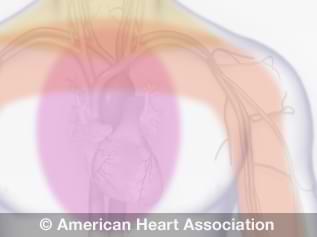Angina in Women Can Be Different From Men
Quick Facts
- Angina is a warning sign of heart disease.
- Angina symptoms in women can appear different from men.
- Symptoms that aren’t recognized can delay treatment.
Angina (chest pain) is a warning sign of heart disease. Recognizing it and getting treated early may prevent a heart attack. Coronary artery disease happens when plaque builds up in your arteries. This reduces blood flow and oxygen to your heart.
As coronary artery disease gets worse, men and women may feel chest tightness, pressure or discomfort during physical activity or stress. It may go away shortly after you stop the activity or get rid of the stress. If the blockages get worse, the pain might last longer or happen at rest.
For women, angina symptoms can also include:
- Nausea
- Vomiting
- Pain in the neck, jaw, throat, abdomen or back
- Shortness of breath
These symptoms stop once the extra demand for blood and oxygen stops. However, these symptoms are often not seen as related to heart disease in women. This can delay treatment.
View a detailed illustration of angina.
Why would angina symptoms be different in women and men?
Heart disease in men is more often due to blockages in their coronary arteries. This is called obstructive coronary artery disease (CAD). Women more often develop heart disease within the small arteries that branch out from the coronary arteries. This is called microvascular disease. It happens mainly in younger women. Up to 50% of women with angina symptoms who undergo cardiac catheterization don’t have obstructive CAD.
Cardiovascular disease is the No. 1 killer of women ages 20 and older in the U.S., affecting over 40% of women, including:
- 58% of African-American women
- 43% of Hispanic women
- 43% of Asian women
Track your angina symptoms with our Angina Log.
Recognize the Signs, Seek Medical Treatment
Recognizing the signs and seeking treatment is the first step. Understanding your risk factors, such as family history, is also important to stay aware of changes in your health.
Learn more about heart disease:







